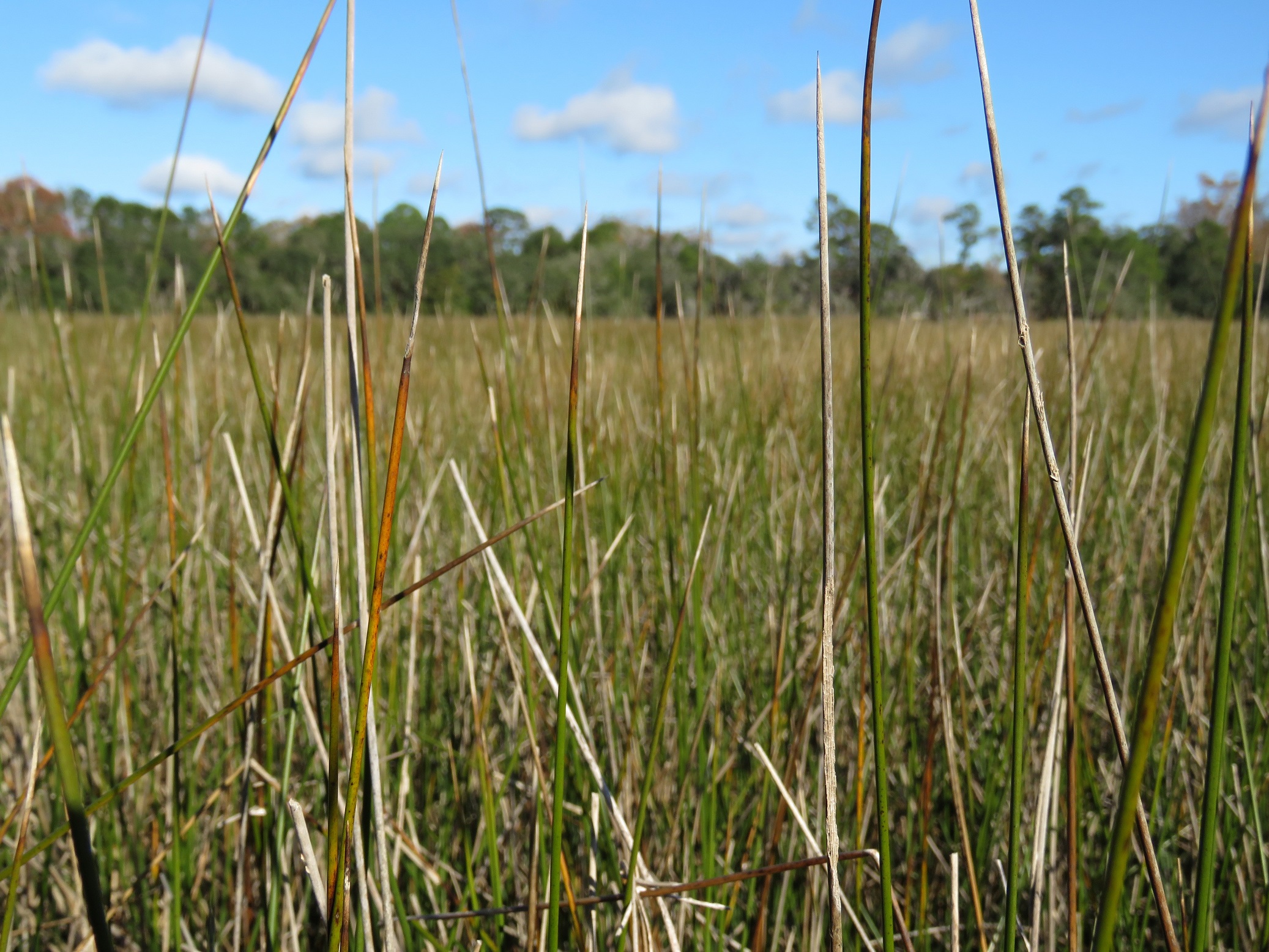
This week for Flora and Fauna Friday we have an aggressive and expansive wetland plant critical to our Island: Black Needlerush (Juncus roemarianus).
Black Needlerush is a member of the Rush family, Juncaceae. Rushes are one of the big three “grass-like” families, along with the Sedges of Cyperaceae and Grasses of Poaceae. The quick trick to telling these three apart are their stems. Grasses have flat leaves, Sedges triangular stems, and Rushes tubular leaves. As we all know, biology is the study of exceptions to the rule. So this quick trick can get you quickly tricked, but it at least holds water for today’s Rush.
As stated, Black Needlerush looks similar to a grass but has tubular leaves. These perennial leaves are often three to four foot long and dastardly sharp. Walking unprepared into a sea of Needlerush is never a pleasant experience. Plants grow in bunches and spread laterally by rhizomes. Needlerush blooms in spring to produce an open, palm-sized cluster of mahogany-brown seed capsules. Black Needlerush is the other half of the tidal tag-team that makes up our salt marsh. Smooth Cordgrass tackles the low marsh and Black Needlerush takes the high marsh. Black Needlerush grows naturally in massively expansive single species meadows across sandy marsh lands and salt flats of the Lowcountry. Needlerush grows on higher elevations than Smooth Cordgrass but often in soils just as saline. It grows on the firm sandy substrate rather than the nutrient fluff that is pluff mud. Its perennial nature provides a more permanent home for our marsh birds and rodents during winter. Its tightly woven leaves create a natural sieve to filter and collect eroding soils and tidal flotsam as well as break apart storm surges and wakes.